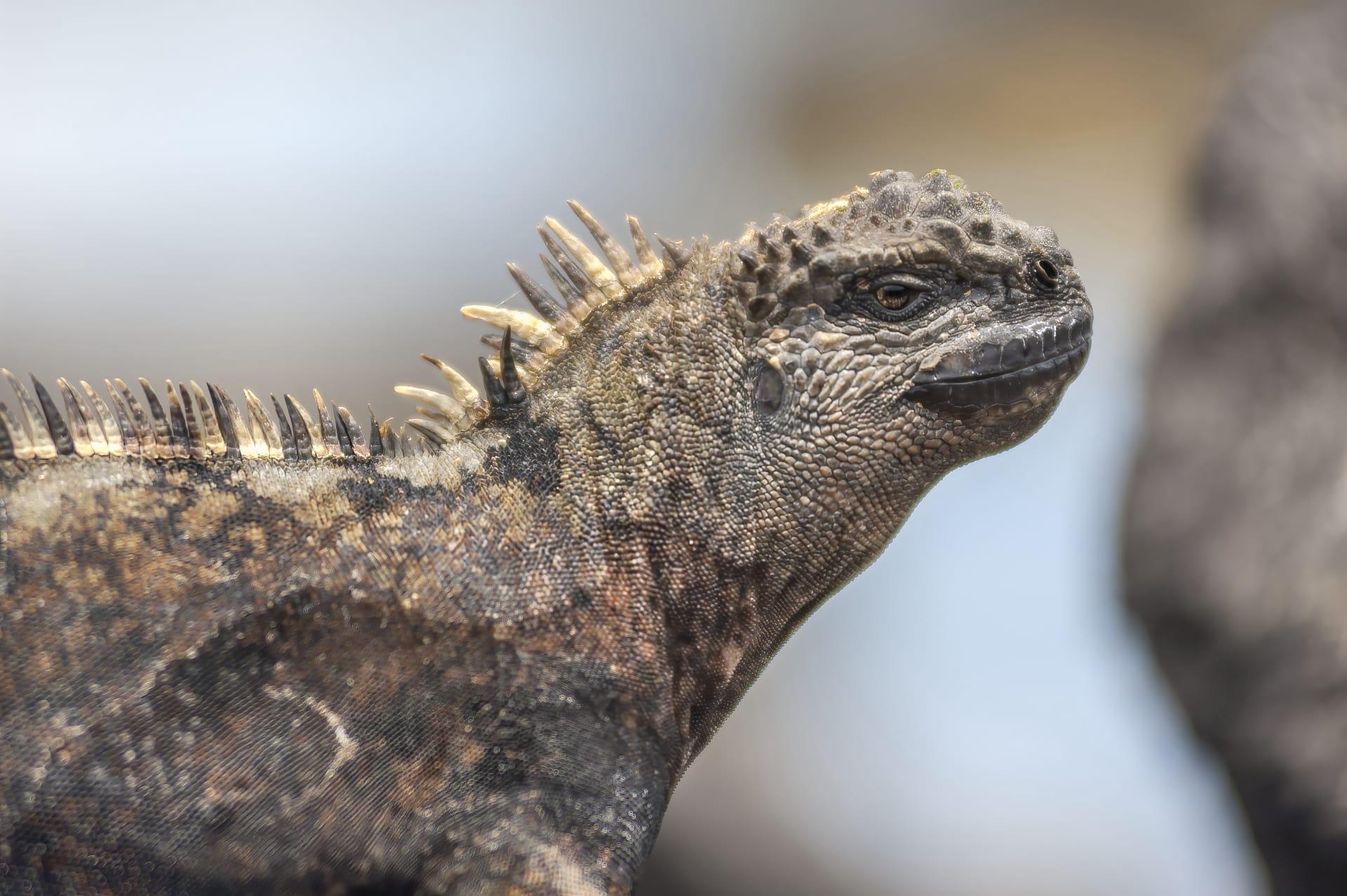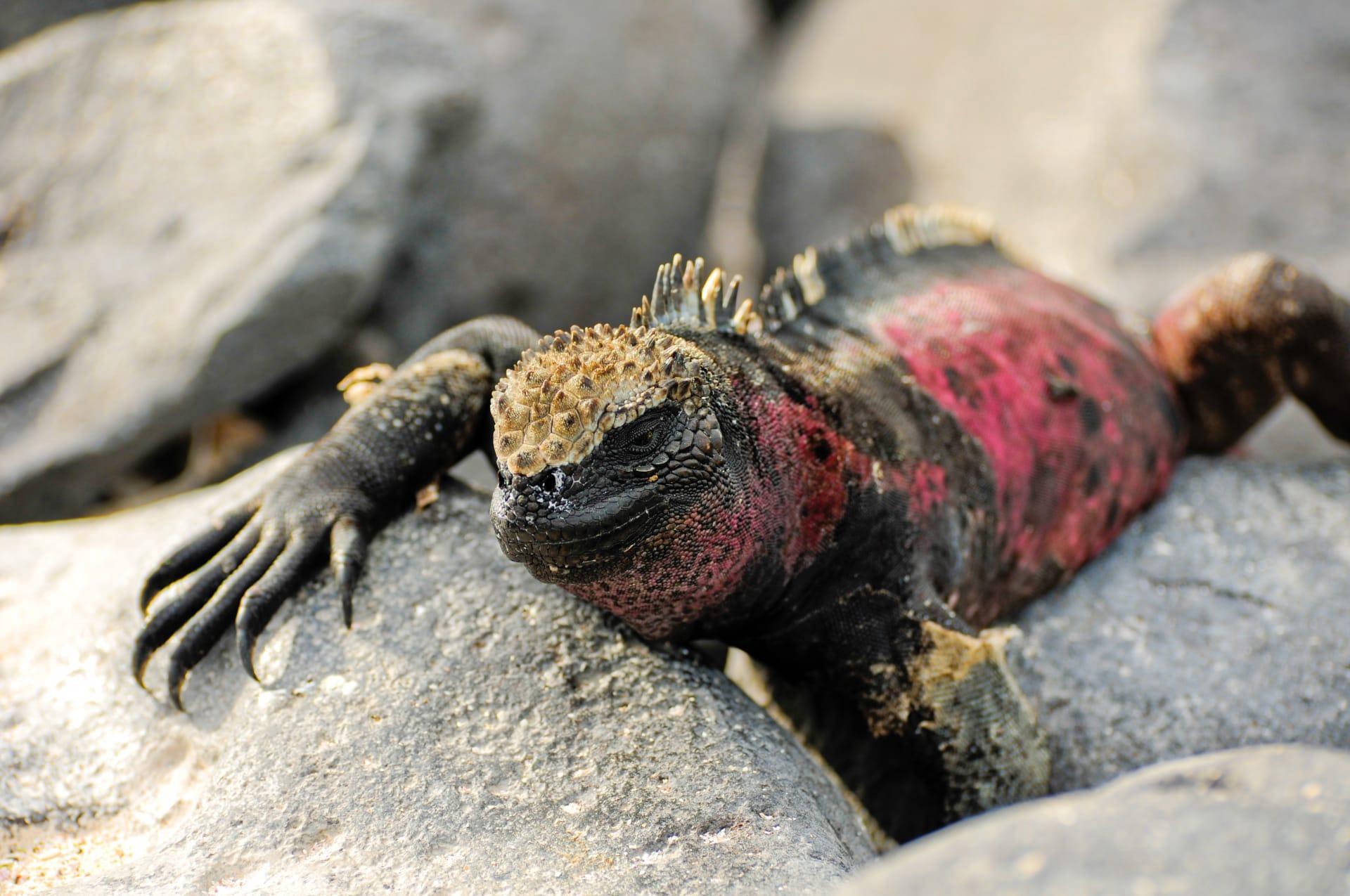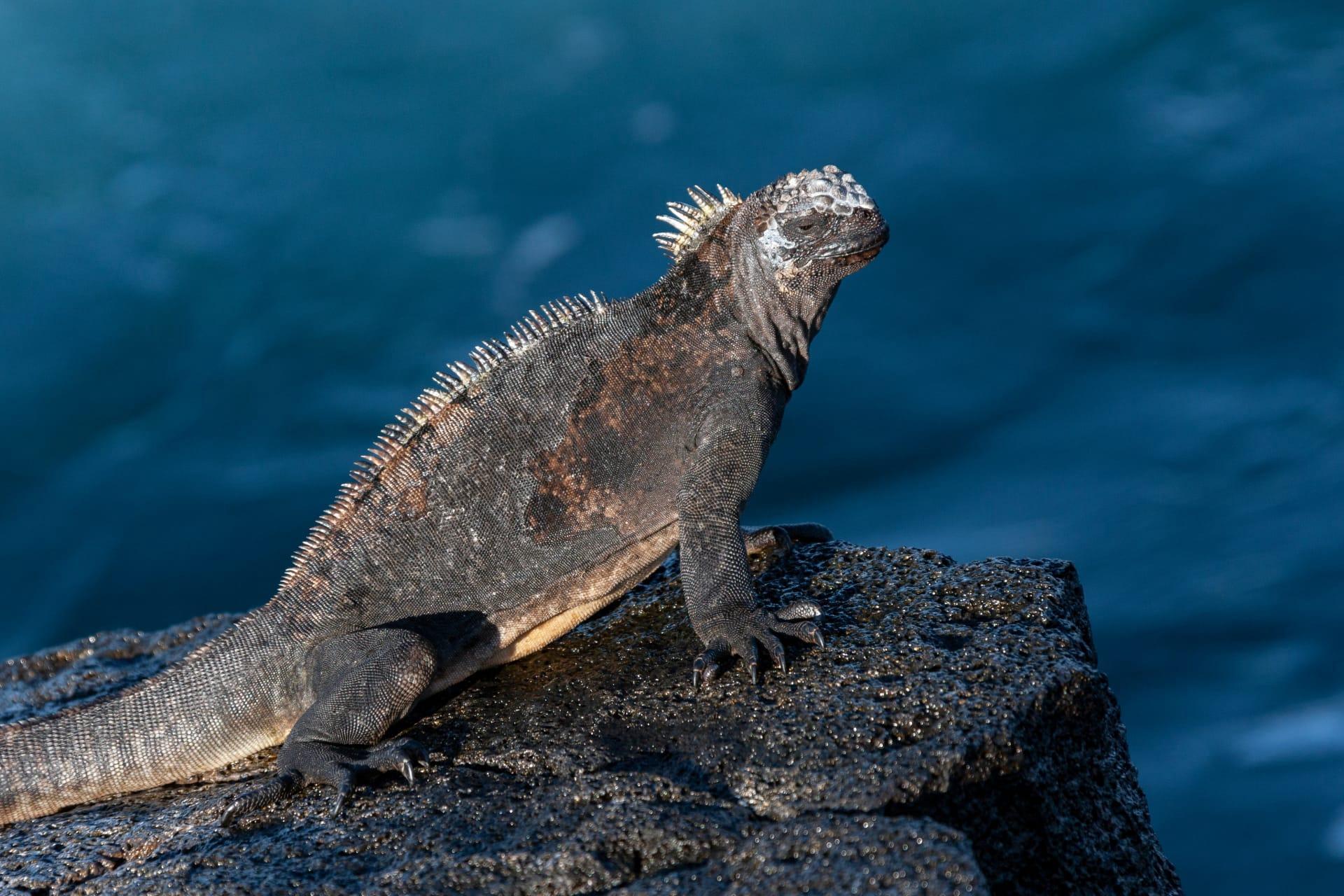Galapagos Iguana
- Home /
- Mini Encyclopedia /
- Animal /
- Galapagos Iguana
1
The Galapagos Iguana, scientifically known as Amblyrhynchus cristatus, belongs to the family Iguanidae. This species is unique, distinguished by its stout body, strong limbs, and a row of spiny crests running down its back. These iguanas exhibit a fascinating range of colors, from a dark, almost black hue to shades of red and green, depending on their age and island of residence. Adult males can reach up to 1.3 meters in length, including the tail, and weigh about 1.5 kilograms, while females are generally smaller.
The Galapagos Iguanas are endemic to the Galapagos Islands, an archipelago of volcanic islands located about 906 kilometers west of continental Ecuador. These iguanas are primarily found on the islands of Fernandina, Isabela, Santa Cruz, Floreana, and Santiago. Their habitat varies from rocky shores to mangrove beaches, where they are often seen basking in the sun. These creatures have adapted to a life both on land and in water, with some populations demonstrating remarkable swimming abilities, diving several meters deep in search of food.

2
Question: Do Galapagos Iguanas have the ability to change their skin color like chameleons?
Answer: Unlike chameleons, Galapagos Iguanas do not have the ability to change their skin color at will. The misconception likely arises from observing these iguanas at different stages of their life or in different environments, leading to the impression of color change. In reality, their skin color changes as part of a natural process related to age, health, and environmental conditions. For instance, young iguanas are generally brighter in color, while adults tend to have darker, more muted tones. Additionally, during the breeding season, males often display more vibrant colors to attract females.

3
The survival strategies of the Galapagos Iguanas are finely tuned to their unique environment. One of their most notable adaptations is their ability to swim and forage in the ocean, a rare trait among iguanas. They primarily feed on algae and seaweed, with some individuals diving up to 9 meters deep and remaining underwater for up to 30 minutes. Their flattened tails and spiky dorsal fins aid in swimming, while their sharp claws help them cling to rocks against strong ocean currents.
On land, their robust bodies enable them to withstand the harsh, arid conditions of the Galapagos, conserving water and regulating body temperature through basking and seeking shade.

4
In the Galapagos ecosystem, these iguanas play a crucial role in nutrient cycling. By consuming algae and seaweed, they help maintain the balance of marine plant life, which in turn supports a variety of marine species. Their foraging activities also contribute to the dispersal of seeds and nutrients across the islands, promoting plant growth and soil health.
The presence of Galapagos Iguanas also has a significant impact on the islands' tourism industry. They are a major attraction for visitors from around the world, contributing to the local economy. Conservation efforts for these iguanas, therefore, not only aim to preserve a unique species but also support the sustainability of the Galapagos Islands as a whole.

5
Film: "Galapagos: Realm of Giant Reptiles" is a documentary produced in the United States in 2018. This film offers an immersive journey into the lives of Galapagos Iguanas, showcasing their unique adaptations and behaviors. It also highlights the challenges they face due to environmental changes and human activities.
Book: "Island Life: The Iguanas of Galapagos" by American author and biologist David Attenborough, published in 2010, provides an in-depth look at the life cycles, habitats, and survival strategies of these fascinating reptiles. Attenborough's vivid narrative, combined with stunning photography, brings the world of the Galapagos Iguanas to life.
Book: "The Secret Lives of Galapagos Iguanas" authored by British ecologist Helen Macdonald in 2015, delves into the ecological and evolutionary aspects of these creatures. Macdonald's book is a blend of scientific research and personal observations, offering insights into the complex interactions between these iguanas and their environment.